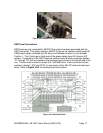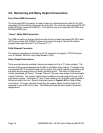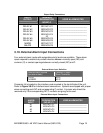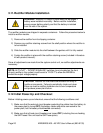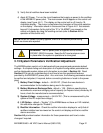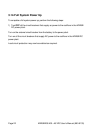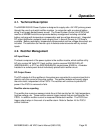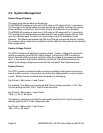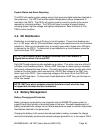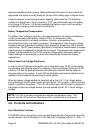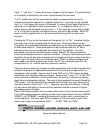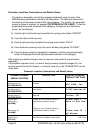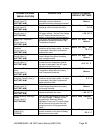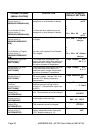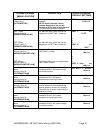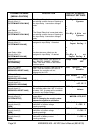
MX28B200/400 –48 VDC User’s Manual (990-9133) Page 25
System Status and Alarm Reporting
The PSCU will monitor system voltage using a high accuracy digital voltmeter attached to
the system bus. The PSCU will monitor system temperature using a temperature IC
mounted in the PSCU. The PSCU will monitor system current by summing the current
reported by individual rectifiers. The PSCU will report a number of system alarms
including system high/low voltage and high/low temperature. Refer to Section 4.6 for
PSCU control functions.
4.4. DC Distribution
Distribution is included for up to 24 plug-in circuit breakers. These circuit breakers can
be 1 to 100 amps, with 60-100 amp breakers requiring two positions and a circuit breaker
adapter kit. When a circuit breaker trips, a normally open switch closes and a CB alarm
is reported by the PSCU. To disconnect a load attached to a circuit breaker, move the
lever to the down “OFF” position.
NOTE: Circuit breaker alarm contacts close when the circuit breaker is
tripped but not when it is turned OFF.
Eight GMT fused outputs are also available as an option. This option uses one of the 24
available circuit breaker positions. When a GMT fuse trips, an alarm spring is revealed
that visually indicates the fuse is blown. The alarm spring also makes contact with a third
contact on the fuse holder, which connects the –48 VDC bus voltage to the GMT fuse
alarm input in the PSCU. Upon measuring voltage on this alarm circuit, the PSCU will
report a GMT fuse alarm. To disconnect a load attached to a GMT fuse, pull the fuse out
of the fuse socket.
NOTE: GMT fuse alarm contacts complete the alarm circuit when the fuse
is tripped but not when the fuse is removed.
4.5. Battery Management
Battery Charging and Protection
Battery charging and protection are integrated into the MX28B DC power system to
support the primary function of providing power to the load. Accurate measurement of
battery parameters like voltage, current and temperature are used to maintain and protect
the batteries attached to the power plant.
Charging the battery at the correct rate reduces battery heating, increases the charge
returned to the battery and prevents excess hydrogen generation or, in the case of VRLA



